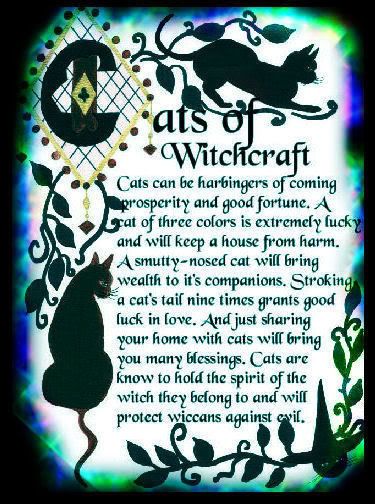Cats play a significant role in folklore from around the world and so, I've decided to assemble some of the stories here:
1.
Il Gato Mammone: The Italian Tale of the Cat King

Source: https://folklorethursday.com/
Once upon a time, there was a woman. She had two daughters, one incredibly ugly and the other one astonishingly beautiful. In a rather surprising twist, the woman loved her ugly daughter more than anything, including the beautiful one, whose beauty drew their jealousy and ire. One day, filled to the brim with envy, they decide to send her to ask the fairies for a sieve, the fair folk being known for their trickery and curses.
On her way to the castle of the fairies she meets an old man whose adherence to folk tale rules would make Vladimir Propp proud. He tells her exactly how to behave, with a strict and perhaps nonsensical etiquette, that if followed would help her find the object she sought after.
Most important of all, she must help the cats in the castle do their housework. The Gatto Mammone, who lives in the castle, is thankful and gives her what she asked for, along with a warning: on her way back home, she must not turn at the call of the donkey, but only when she hears a rooster. As she does so, a beautiful star is magically embedded in her forehead.
You can easily imagine the rest of the story: her sister goes through the same ordeal, but her pride gets the best of her and she’s shunned away by the cats. On her way back, she turns at the bray of the ass, and a donkey’s tail is magically embedded in her forehead.
2. Bayun Cat
Cat Baiyun/Bayun Cat. Illustration by K. Kuznetsov from the collection “Russian folk tales”
Bayun Cat is a fascinating character of Russian fairy tales.
It is a huge man-eater with a magical voice. When he spins his magical tales, travelers are lulled into complacency or even sleep by his hypnotic voice. Those of them who do not have enough strength to resist his magic or who are not prepared to battle with him, will be ruthlessly killed by the cat-sorcerer. But those who can capture a Bayun cat will find salvation from all diseases and illnesses - the tales of Bayun are healing.
Word Bayun means "talker narrator talker" from the verb bayat - "tell talk" (cf. also verbs. Cradle , lull in "put to sleep" value) [1] [2] . In fairy tales it is said that Bayun sits on a high, usually iron pillar. The cat lives in distant lands in the thirtieth kingdom [3] or in a lifeless dead forest, where there are no birds or animals [4] . In one of the fairy tales about Vasilis the Beautiful, the Bayun cat lives with Baba Yaga .
There are a large number of such fairy tales, where the main character is given the task of catching a Bayun Cat; as a rule, such tasks were given in order to destroy a good young man. Meeting with this fabulous monster means inevitable death. To capture the magic cat, Ivan Tsarevich puts on an iron cap and iron mittens. Winning and catching the animal, Ivan Tsarevich delivers him to the palace to his father. There, the defeated cat begins to serve the king - telling fairy tales to heal the king with lulling words [5] .
3.
Cats of Witchcraft
In ancient Scotland, it was believed that witches could shapeshift into . However they had to be careful, as once they had shifted for the ninth time they could not shift back.
In ancient times on the festival of Samhain/Halloween, dishes of milk were left outside houses for a witch who could change into cat form; she’d bless each house in return. But if you didn’t leave an offering of milk, you’d be cursed and your cows’ milk would dry up.
In Wales, the cat was thought to be a capital weather glass. If she stood or lay with her face towards the fire, it was a sign of frost or snow; if she became frisky, bad weather was near. If the cat washed her face and ears, then rain was sure to come."




























